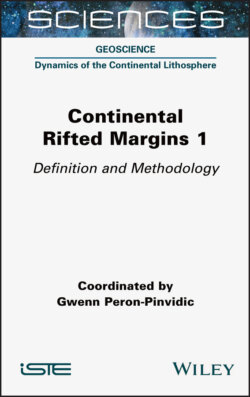Читать книгу Continental Rifted Margins 1 - Gwenn Peron-Pinvidic - Страница 15
1.2.1. Rift mechanism classification: active versus passive rifting
ОглавлениеOriginally, rifts were classified by the process of lithospheric thinning: in active rifts, deformation was thought of as driven by active asthenospheric upwelling, whereas in passive rifts, the asthenospheric upwelling was itself viewed as a passive response to lithospheric extension (Neumann and Ramberg 1978; Şengör and Burke 1978) (Figure 1.3).
Active rifting processes are governed by the upwelling of warm asthenospheric mantle beneath the base of the continental lithosphere, causing uplift and thinning of the continental plate by heating, basal shear and melting (Burke and Dewey 1973; Turcotte and Emerman 1983; Buck 1991). The idea is that in the earliest stages of this process, the lithospheric mantle is thinned by thermal erosion, while the continental crust is uplifted and affected by volcanic products, but preserves its initial thickness. The crust is thinned by extension in secondary stages (Merle 2011). This model was developed to explain various observations in rifts such as uplifted plateaus and abundant volcanism (e.g. flood basalts). Depending on the setting, the cause of asthenospheric rise is often related to a mantle plume, although the observations and constraints remain debated. For instance, the Rio Grande Rift (US–Mexico) is often listed as a type example of an active rift, with a narrow geometrical structural setting that is formed by laterally distributed pure shear extension (Wilson et al. 2005), with no observations suggesting the presence of a plume.
On the other end of the spectrum, passive rifting is driven by distant stresses that cause crustal and lithospheric mantle extension and thinning, resulting in a passive asthenospheric mantle rise (Turcotte Oxburgh 1973; Keen 1985; Ruppel 1995). The driving forces are generated by plate boundary motions (e.g. subduction pull and ridge push) or by convective motions at the base of the lithosphere. The main contrast between passive and active rifting is that in passive rifting, the rise of the asthenosphere occurs only in response to the thinning of the overlying lithosphere – as opposed to active upwelling, driving the extension for active rifting. This passive upwelling can then generate various secondary processes affecting the rift-like decompression melting and consequent mantle-derived magmas which are added to the crust (as underplating, intrusions and extrusions) and specific lateral thermal gradients (Ruppel 1995; Huismans et al. 2001).
Based on these definitions, it must theoretically be possible to distinguish the two rift types based on volcanism and the timing of the extensional phases or crustal uplift parameters. However, modern observations show that these models, although useful, are too simplistic. Various rifts show tectonic evolution and structural settings that combine “passive” and “active” characteristics (Ruppel 1995). These passive or active rifting classifications rather appear as end-member types in a continuous spectrum of continental extension processes.
Figure 1.3. Schematic illustration of the two main theoretical categories of rifting: active and passive. Active rifting is controlled by the warm asthenospheric mantle that rises beneath the base of the continental lithosphere, causing thinning of the plate and uplift at the rift zone. Passive rifting is controlled by distant extensional stresses, causing stretching and lithospheric thinning and passive rise of the asthenosphere below the rift zone
